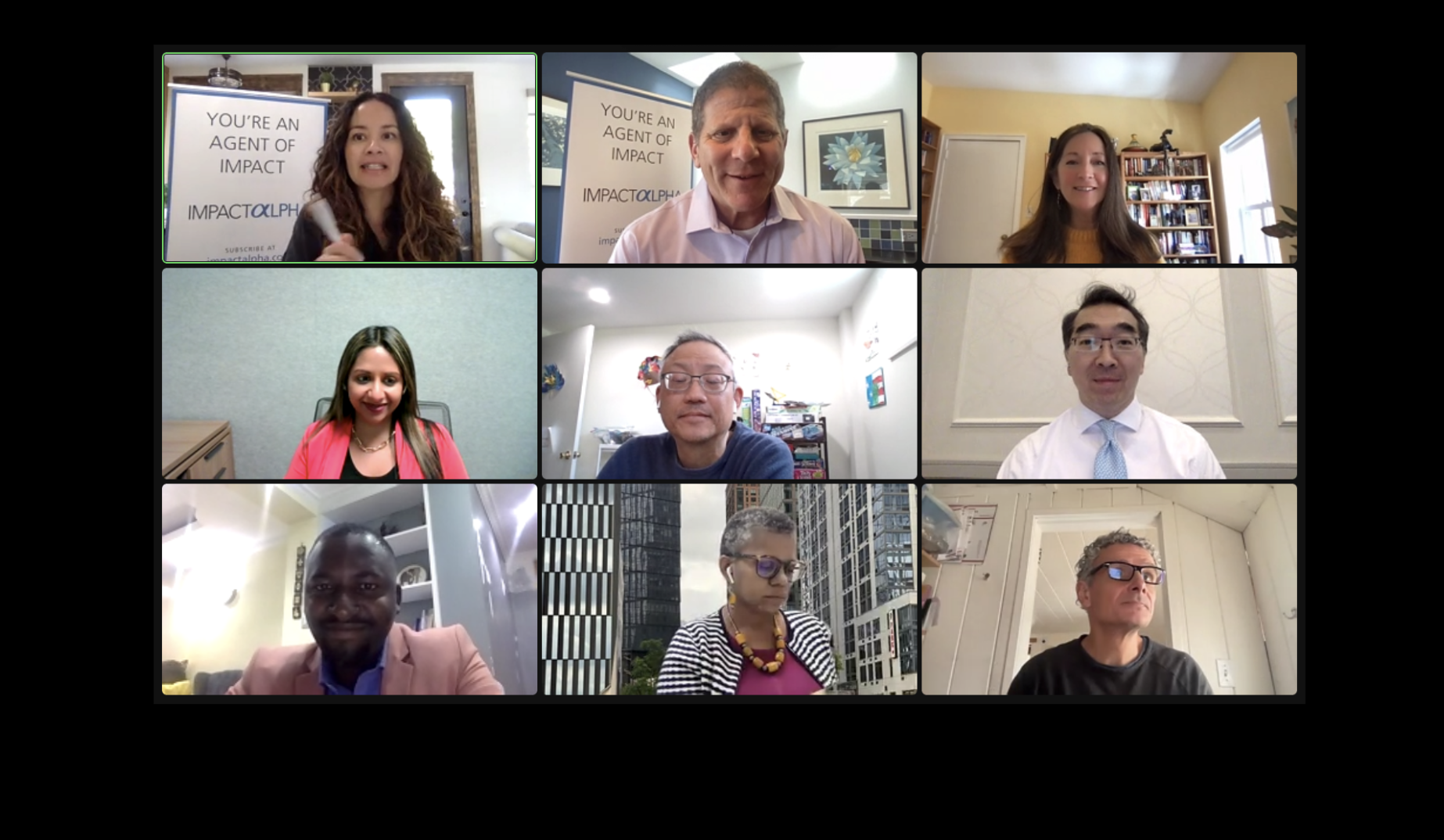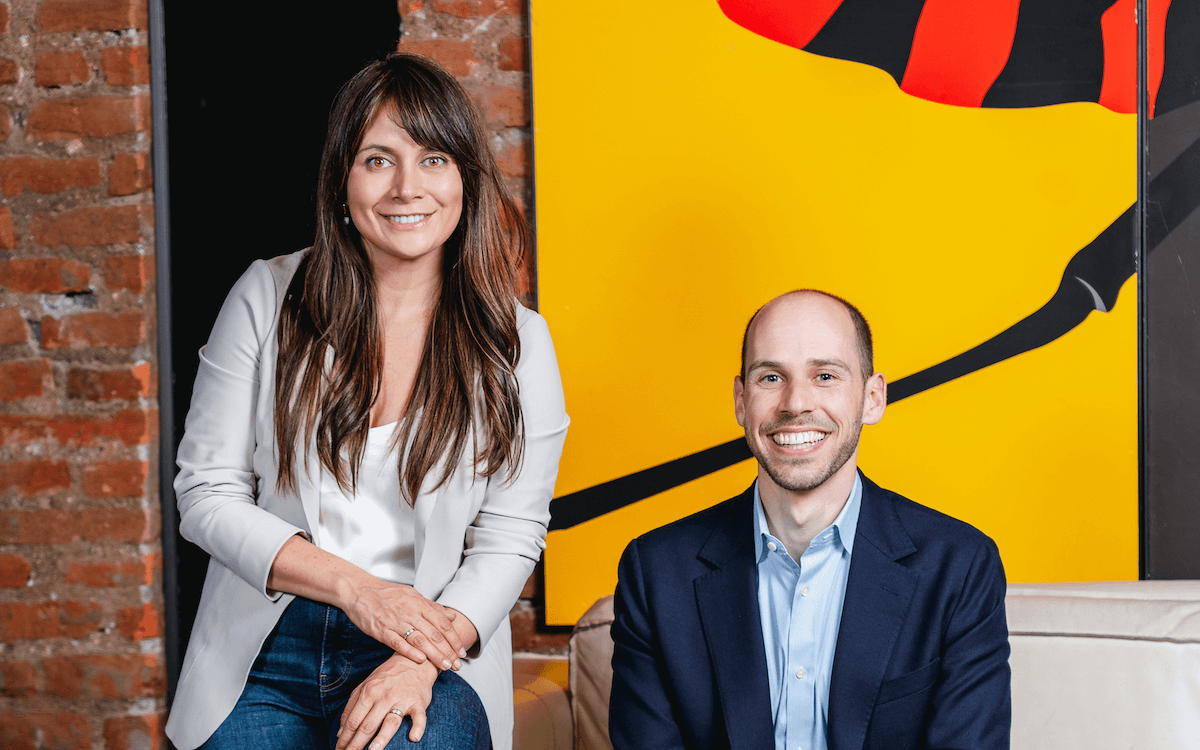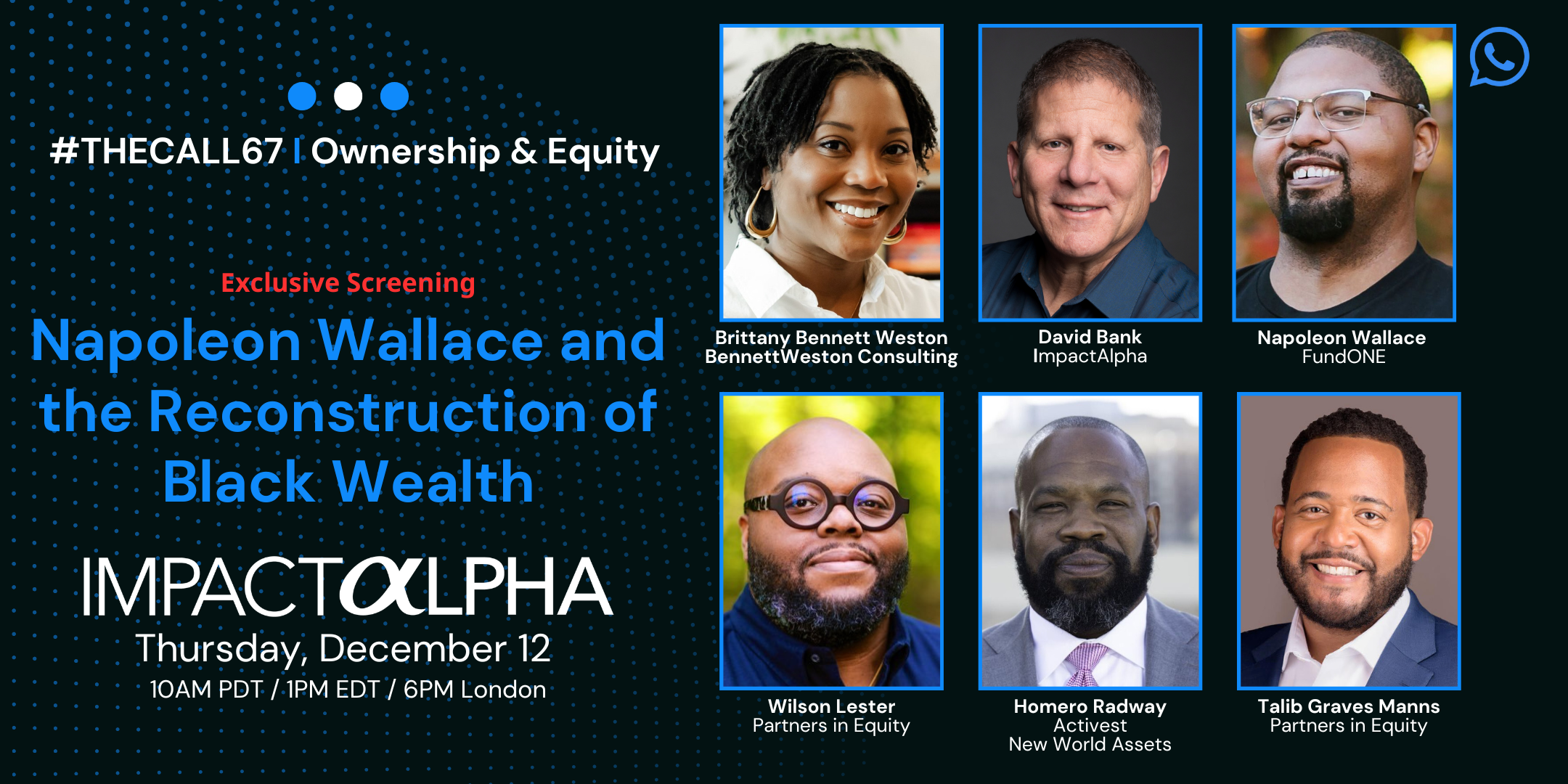ImpactAlpha, April 22 – The Ukraine crisis risks tipping up to 1.7 billion people — over one-fifth of humanity — into poverty, destitution and hunger. It’s another in this series of disruptions for which climate resilient solutions, from clean energy to sustainable agriculture, are the solution.
The challenge now: moving from a loss-mitigation mindset to seizing the opportunity for transformative change.
Financing mechanisms for scaling equitable climate adaptation are coming into focus. Social equity – driving the protection and the benefits down the economic pyramid – is the key to unlocking climate solutions.
“Climate change is here, and will continue to unfold,” said Jay Koh of Lightsmith Group, which closed on its $186 million Climate Resilience fund, one of the first-ever adaptation-focused funds, in January.
“Our view is that this creates both an enormous impact and investment opportunity.”
Koh joined other agents of impact this week on ImpactAlpha’s Call No. 41 to explore innovative ways of catalyzing capital for climate adaptation and equity.
Smallholder farmers are integral to climate solutions, noted Benjamin Njenga of Apollo Agriculture. Most of the land in Africa is farmed by small farmers in difficult to reach locations. They struggle to access capital and credit, which makes it hard for them to invest in their farms. That low productivity drives demand for more land, which leads to a destructive cycle of deforestation.
Apollo is breaking that cycle by providing high-quality seeds, fertilizer, training in climate-smart practices and insurance to protect farmers from extreme weather disruptions. “These farmers are able to succeed, and they’re able to even double or triple their production,” said Njenga, who joined The Call from Nairobi.
Such interventions create a sustainable financial model and reduce pressure to expand and cut down trees for more farmland. Last season, a drought gripped much of Kenya. Having insurance, Njenga said, helped farmers avoid ruin and plant for the next season.
“The big call,” said Njenga in what was a recurring refrain, “is that we need to scale up these solutions.”
Signaling power
Private investors, long on the sidelines of climate adaptation, are keying in on the opportunity to build resilience in communities on the frontlines of climate change.
Among them are institutional investors such as Nuveen, the $1.3 trillion asset management arm of TIAA. Nuveen has invested more than $1 billion over the past decade around a thesis of inclusive growth and resource efficiency through its own funds, including the $200 million Nuveen Global Impact Fund.
It also recently committed $100 million through the Shell Foundation to support the kinds of interventions that Njenga and others are providing.
Massive amounts of capital have been raised to combat climate change, noted Nuveen’s Rekha Unnithan. But much of that capital is focused on large scale renewables and utility-scale projects in developed markets.
“We have had a very keen interest in serving the needs of other markets where the low-income emerging customers are very much part of that energy transition story,” she said.
Nuveen’s investments look to bring basic products and services to low-income, emerging customers, such as financial services, health education, and resource-efficient assets, including those that mitigate climate change. “We take a climate adaptation and adaptive approach to all investments that we make, because we believe it makes good sense to chart a path towards a more resilient business operation and experience for your customers,” added Unnithan.
The sweet spot: companies with clear unit economics that have perfected a business model that can use Nuveen’s growth capital to scale.
The firm’s track record and staying power “has really shown that institutional investors can invest effectively,” says Unnithan. “We think that signaling power is really important.”
Lightsmith Group’s Climate Resilience Fund is yet another signal. The first-time fund is zeroing in on companies that have technology that can help assess and manage the physical risks and impacts of climate change, from supply chain and agricultural analytics to water management and catastrophe risk modeling. “The thesis of the fund is basically a tools strategy,” says Koh.
“We need to scale up the tools and technologies and projects to deal with adaptation and climate resilience, particularly for disadvantaged populations, for low-income countries, for vulnerable populations in developed countries, and to accelerate the scaling up and deployment of technology as fast as possible,” said Koh.
Catalyzing adaptation
Lightsmith itself is an example of catalytic capital. The blended fund was launched with support from the Global Environment Facility and the Nordic Development Fund, and incubated at the Global Innovation Lab for Climate Finance, run by the Climate Policy Institute.
The Nordic Development Fund, the Luxembourg government, the Rockefeller Foundation, and the Green Climate Fund provided a junior layer of capital. “That has really catalyzed a substantial number of other investors into a senior layer of the fund to generate commercial return,” noted Koh, who said the fund is modeled after early investment strategies used to kickstart renewable energy.
The Climate Resilience Fund also has a technical assistance facility to support deployment of adaptation technology in low-income countries, small island nations, and other vulnerable populations and to help bring down costs over time. One example is Lightsmith portfolio company Source Global, which uses solar hydro panels to draw clean water out of the air. The product is being deployed in the Navajo Nation and piloted in some small island nations with the help of technical assistance support from the Nordic Development Fund and the U.S. State Department.
“Scaling, and solving the misallocation of financial capital remains the challenge of the impact investing world,” observed Gillian Marcelle of Resilient Capital Ventures.
Marcelle made the case for a holistic approach that brings in other forms of capital. “If you do not have knowledge capital, if you do not have social and cultural capital, the dollars are not going to go where they need to, and neither are they actually going to produce returns.” (Check out her Triple B framework).
Agents of Impact on The Call also got a sneak peek at a new data mapping tool being developed in partnership with ImpactAlpha and RTI International by ecologist and complexity scientist Eric Berlow. By mapping investment flows with funding types, Berlow identified a dearth of venture funding for climate adaptation and equity solutions, bearing out the premise of The Call.
ImpactAlpha is collaborating with Berlow and RTI to expand the initial mapping to include domestic and international private funding for climate solutions
Public sector support will continue to be important as adaptation models develop. “We are taking a private sector approach mobilizing private capital,” said USAID’s Songbae Lee, “but we see a continuous need for subsidy for the foreseeable future.” The agency backed Aceli Africa, for example, to subsidize and incent private lending to small and mid-sized enterprises, with 20% going to adaptation.
Still, Nuveen and Lightsmith say adaptation solutions are ready to scale, and they expect healthy, commercial returns. “It is the job of folks like us and agents of impact at various stages of investment along the continuum in different pools of capital and risk appetite, to help with the de-risking right part,” said Unnithan.
Koh ended with a call to action for Agents of Impact: “Come to the adaptation climate resilience universe, start companies, scale companies, come and invest in the adaptation and climate resilience opportunity, because it is an enormous opportunity.”












